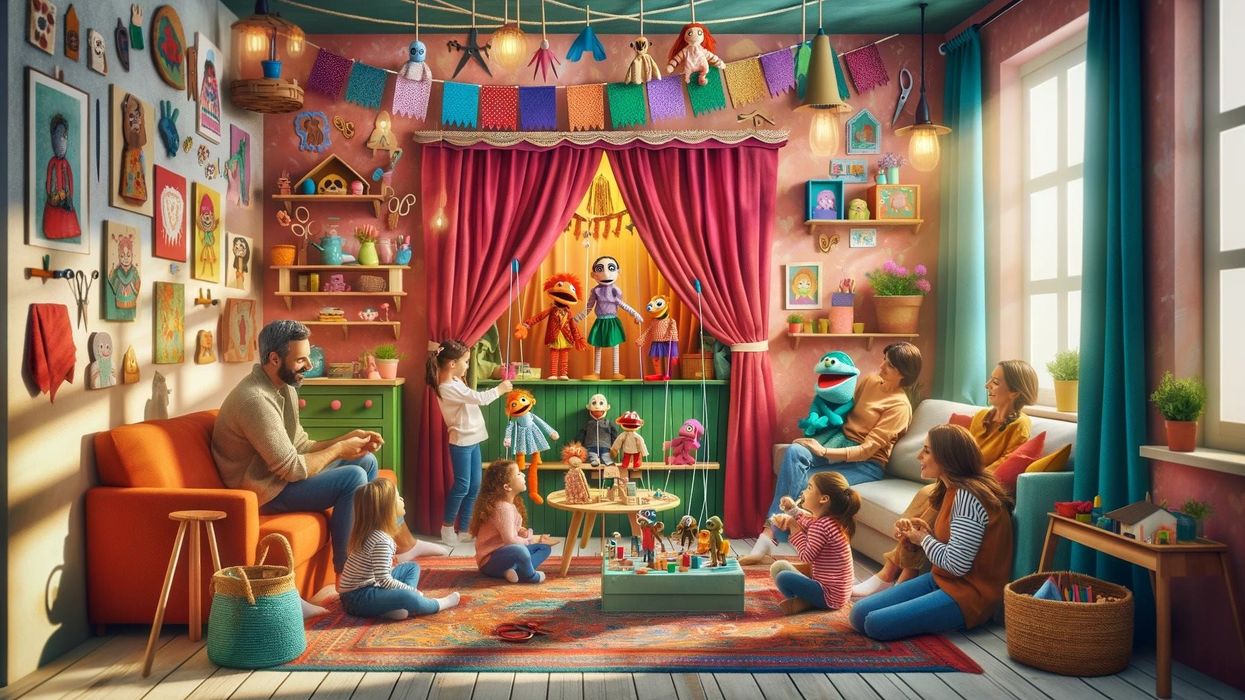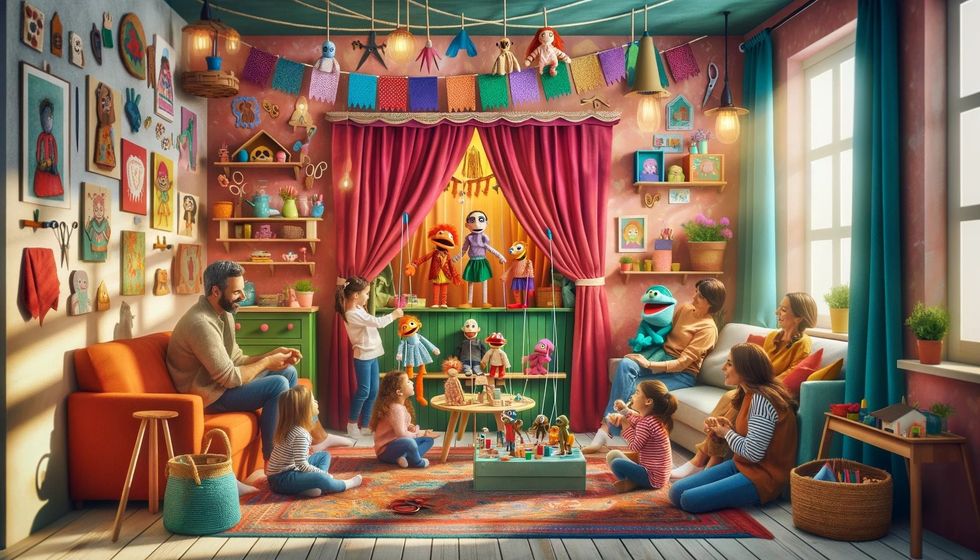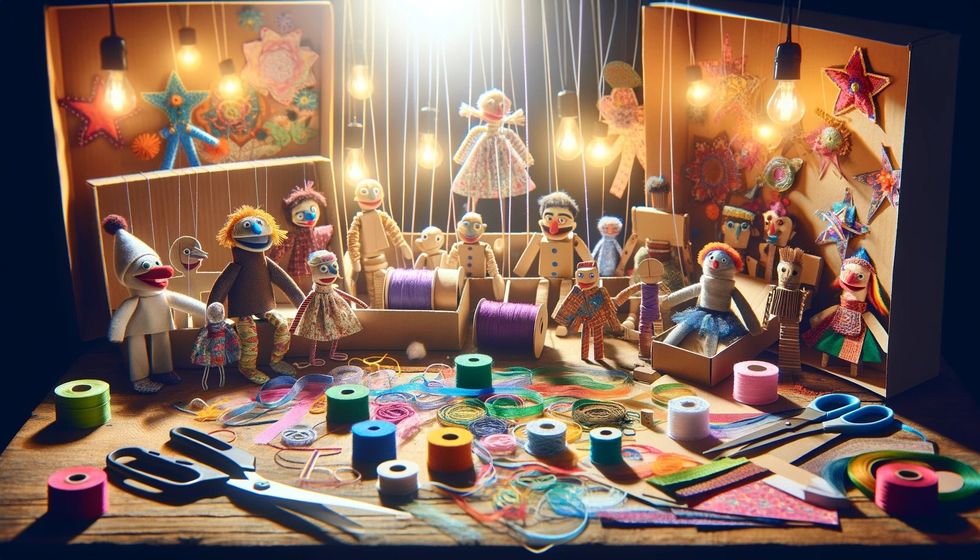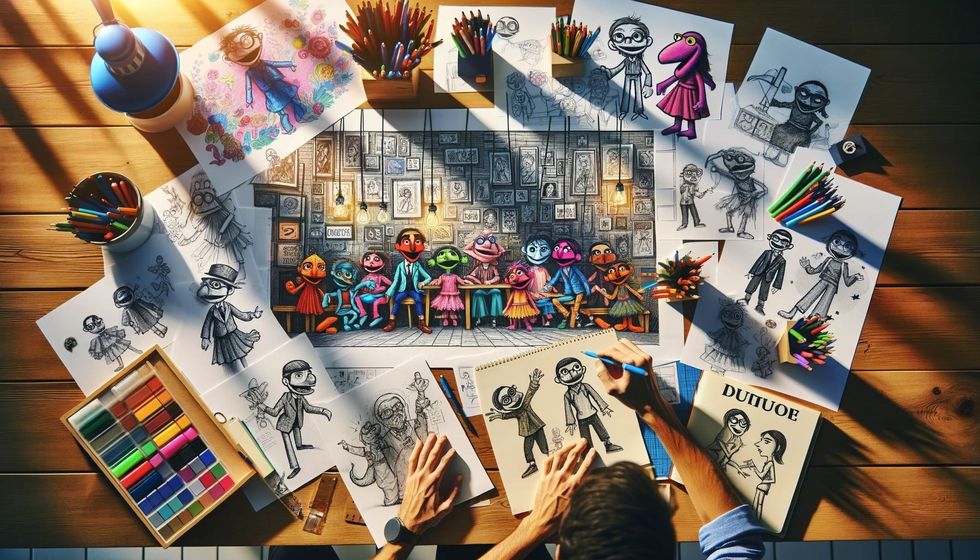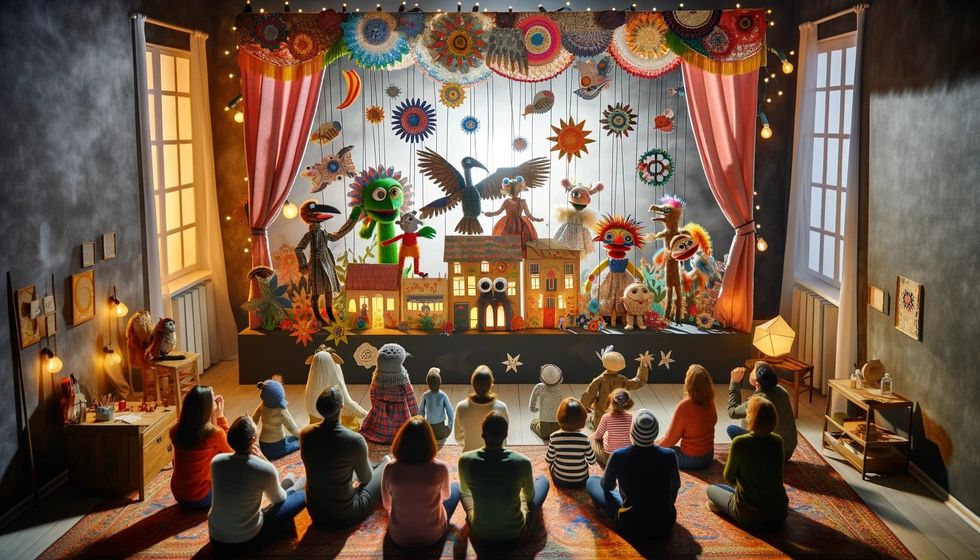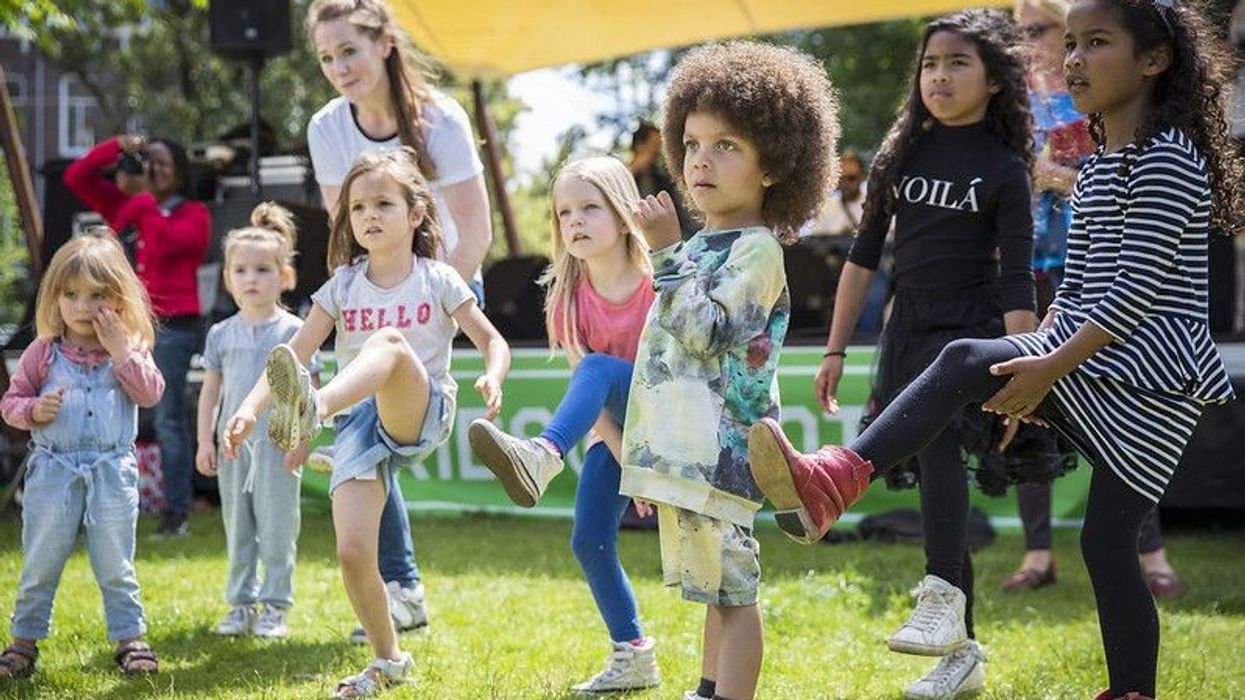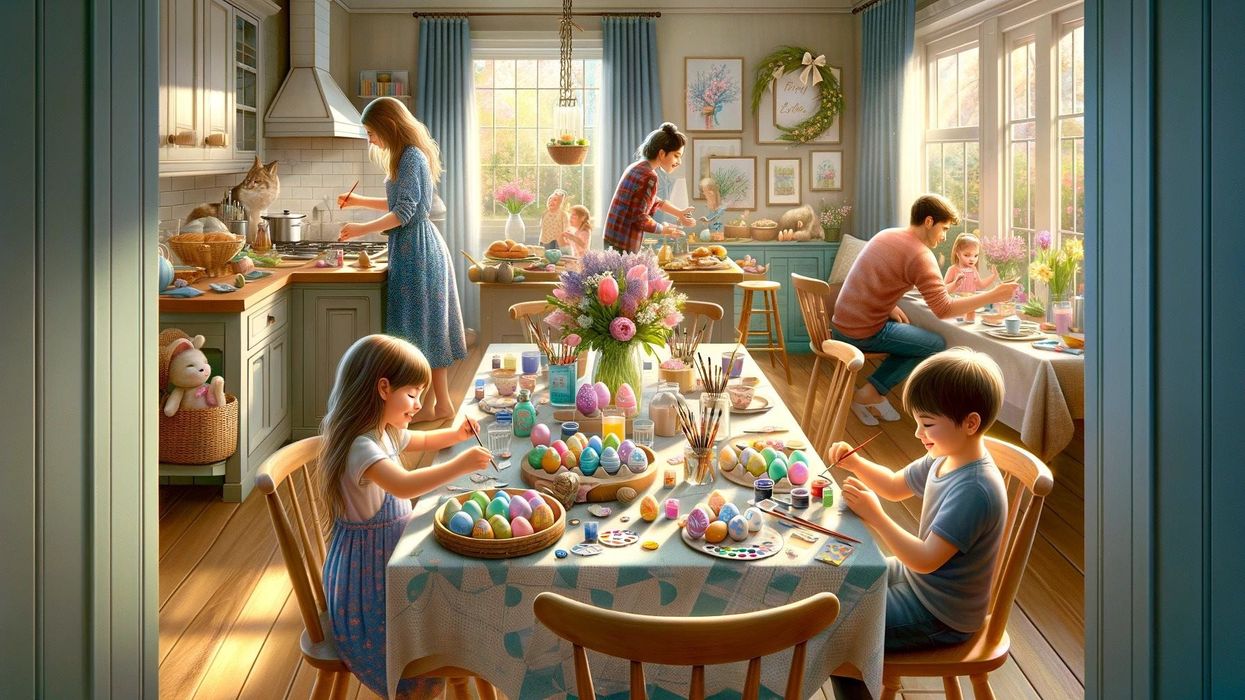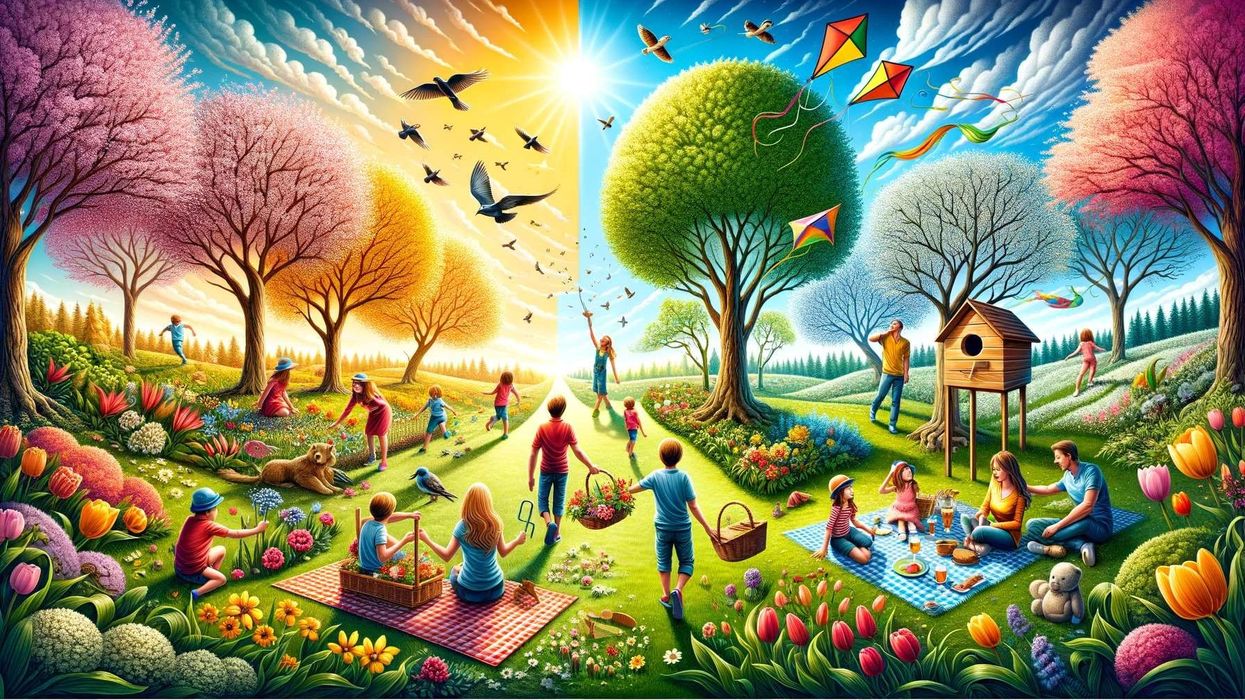Hosting a puppet show at home is a wonderful way to bring a world of imagination right into your living room. This creative activity provides entertainment in the form of endless storytelling possibilities, allowing every scene to unfold uniquely with charm.
With a simple puppet stage or theater setup, families can transform their space into a play area where stories come to life.
The beauty of puppetry lies in its simplicity and the level of engagement it offers. It doesn't require expensive equipment or extensive preparation. A few basic materials and a stand for the puppets are enough to get started. The real magic happens when the puppets take the stage, each character ready to play its part in the unfolding story.
Creating a puppet theater at home encourages everyone to participate, from crafting the puppets and designing the stage to scripting the play. It's an activity that supports learning, creativity, and fine motor skills, all while providing a platform for family members to share stories and laugh together.
The process of setting up the stage up until the performance fosters a sense of accomplishment and pride in creating something from scratch.
This form of play is not just about entertainment; it's a way to explore a world of imagination. Each performance can have its play set in different places, from fairy-tale lands to adventures in outer space.
The flexibility of puppetry allows for a wide range of themes and narratives, making it an ideal medium for exploring various cultures, historical periods, and moral lessons.
Moreover, puppet shows at home offer a unique way to communicate and express emotions. Puppets can serve as tools for children to explore and understand different perspectives, encouraging empathy and emotional intelligence. Through the interaction of characters, children learn about conflict resolution, teamwork, and the importance of listening to others.
Setting up a puppet theater at home is an enriching experience that combines art, storytelling, and family bonding. It provides a stage for imagination, where every family member can contribute, explore, and most importantly, enjoy the wonder of bringing stories to life.
This article will help you create and explore the design, the creative aspects of scene setup, and the joy of performance. Puppetry at home stands as a testament to the power of play and imagination in nurturing connections and crafting memorable moments.
Setting Up Your Puppet Theater

Getting your space ready is a crucial step. This list will help you create the perfect backdrop for your puppet show at home. It covers everything from selecting the right space to decorating your stage, ensuring your setup is both functional and visually appealing.
- Start by choosing a theme and style for your puppet theater to make sure everything looks connected and tells a story together.
- Pick a place in your home for the puppet theater that has enough space for both the family members putting on the show and those watching it.
- A cardboard box can be the perfect stage for your puppet theater. Just cut out rectangles on both sides to create the stage area.
- Strengthen your puppet theater and make it look even better with some decorative tape or a bit of paint.
- Think about adding some background or scenery to your stage to help set the scene for your puppet show.
- If the background makes it hard for the puppeteers to see, you can cut a hole in the top of the theater so puppets can be brought in from above.
- Use decorations on your set that help tell the story but don't take away from the puppet show.
- Make sure there's enough space for all the puppeteers to move around comfortably without bumping into each other.
- Your puppet theater must be designed well so that it's easy for the puppets to move and for everyone watching to see the show clearly.
Making And Customizing Your Puppets

Your puppets are the heart of the show. This list will help you craft and personalize the stars of your puppet show. It provides tips on creating diverse characters that will bring your stories to life, making your home puppet theater vibrant and engaging.
- Start with simple materials like socks or paper bags to make the base of your puppets. It's a fun way to recycle and create together.
- Add features like eyes, hair, and clothes using buttons, yarn, and fabric scraps. This is a great chance to let creativity shine.
- Try different textures and materials to give each puppet a unique look. Exploring together can make each character special.
- Think about your story's characters when making them. This helps everyone know who's who during the show.
- Use things like detachable parts or accessories for costume changes. It adds excitement to the performance.
- Add movable parts, like arms or mouths, to make your puppets come alive. Strings or sticks can work wonders.
- Give your puppets unique traits that stand out. Small details can make big memories for your audience.
- Create a variety of characters to tell all kinds of stories. Diversity in the cast makes for richer storytelling.
- Use different voices or ways of speaking to make each puppet unique. It's a playful way to bring characters to life.
- Practice moving the puppets smoothly. This makes the show more engaging and fun to watch.
- Consider joining storytelling workshops. They're great for picking up new skills and ideas to make your shows even better.
- Work together and share ideas to improve your puppet show. Everyone's input can make the performance shine.
- Keep a record of how each puppet was made and their story. Sharing their journey can be a special part of the show.
Writing And Planning The Puppet Show

A great story is what makes a puppet show truly stand out. This list will guide you in developing the script and storyline for your puppet show. It offers advice on structuring your narrative and organizing rehearsals, ensuring your performance is smooth and captivating from start to finish.
- Kick off your puppet show planning by brainstorming story ideas that will capture and hold the attention of your viewers.
- Make sure your story has a clear beginning, middle, and end to keep the narrative easy to follow.
- Flesh out your puppet characters by thinking about their motivations, what they're good at, and where they might struggle, to make the story more interesting.
- Add challenges for your characters to overcome. This creates excitement and keeps everyone wondering what will happen next.
- Use conversations and actions in your story to keep things moving and show off the personalities of your characters.
- Plan to use changes in scenery and sound effects to make your puppet show even more captivating.
- When writing your script, include specific instructions for the puppeteers so they know exactly what to do and when.
- Sprinkle in some jokes or unexpected moments to keep your audience laughing and engaged.
- Hold practice sessions to get the hang of the show’s flow, how the puppets move, and how lines are delivered.
- Record these practice runs to look for ways to make the show smoother and more polished.
- Welcome suggestions from everyone involved to make the script and the show the best they can be.
- Be open to tweaking the script based on what you learn from rehearsals and new ideas that come up.
- Map out a timeline for your show that outlines when set pieces need to change, when puppets come on or off stage, and the main events of the story.
- Think about ways to get the audience involved, like having puppets talk directly to them or asking viewers to join in at parts.
- Get your script and plan for rehearsals finalized with plenty of time before the show to make any last-minute tweaks and ensure everyone's ready.
Performing The Show And Engaging Your Audience

The final touch is how you bring the show to your audience. This list will help you deliver an unforgettable performance and keep your audience engaged. It includes tips on puppet manipulation, voice acting, and interacting with viewers, making your puppet show a memorable experience for everyone involved.
- Work on puppet control to make their movements look real and smooth when it's showtime.
- Give each puppet its own voice to make it truly stand out and help the audience connect with the story.
- Go through the show several times to get the timing, scene changes, and puppet interactions just right.
- Make the audience feel involved by having the puppets look at them and talk to them as if they're part of the adventure.
- Change up your voice or how you speak for each puppet, so each one has a special sound and personality.
- Add parts where the audience can join in, like repeating lines or answering questions, to keep them interested.
- Take care of your voice by drinking water and resting it when you can, so you're ready to perform your best.
- Practice moving the puppet's mouth in time with your words to make it look like they're really talking.
- Show different feelings through how the puppets move and their facial expressions to tell the story without words.
- Be ready to throw in a joke or change things up based on how the audience is reacting to keep the energy up.
- Have a backup plan to keep the show going smoothly if something unexpected happens.
- Ask the people watching what they thought afterward to get ideas to make the next show even better.
- Use props and change the scene around to help tell the story and make it more interesting to watch.
- Keep an eye on the show's pace to make sure it keeps moving and keeps everyone's attention.
- After the curtain falls, let the audience meet the puppets or ask questions to leave them with a memorable experience.
FAQs
What materials do I need to start making my own puppets for a home puppet show?
To kick off your puppet-making adventure, you don't need to look further than your own home. Items like old socks, spare paper bags, scraps of fabric, buttons, and bits of yarn are perfect for bringing your puppet characters to life.
These basic materials allow you to create a wide range of characters, each with their own unique features like eyes, hair, and clothes.
Whether you're aiming for a simple hand puppet made from a sock or a more complex character with a paper bag body, these materials provide a great starting point. It's all about letting your creativity flow and seeing how everyday items can transform into the stars of your puppet show.
How can I learn puppet manipulation and voice acting for my puppet show?
Learning to bring your puppets to life with skillful manipulation and captivating voice acting starts with practice and experimentation. Spend time getting to know your puppets, trying out different movements, and matching them with unique voices to give each character a distinct personality.
Don't underestimate the value of live practice sessions. Performing stories for a small audience, like your family or friends, can provide invaluable feedback and help you refine your skills. Remember, the key to a great performance lies in how well you can make your characters move and speak in a way that captures your audience's imagination.
Where can I find inspiration or ideas for the storyline of my puppet show?
Finding the perfect story for your puppet show can be a fun adventure in itself. Look to children's books and classic fairy tales for timeless stories that captivate young audiences. These stories often come packed with valuable lessons and adventures that can easily be adapted to your puppet stage.
Creating original stories based on your puppet characters allows for unlimited creativity, letting you tailor the narrative to their unique traits. Watching other puppet shows can also spark ideas, showing you different storytelling styles and themes.
Whether you choose to retell a beloved story or craft an entirely new tale, ensure it resonates with the interests and imaginations of both you and your audience.
What are some tips for engaging my audience during the puppet show?
Engaging your audience is crucial for a memorable puppet show, and there are several ways to ensure your viewers are captivated from start to finish. Making eye contact through your puppets and interacting directly with the audience can create a personal connection, making viewers feel like part of the story.
Including interactive elements, such as call-and-response segments or inviting audience participation, adds an interactive layer to the show. Humor is a universal language, so using jokes and improvising based on the audience's reactions can keep the atmosphere lively.
Giving each puppet a distinct voice and personality not only adds depth to your performance but also helps to hold your audience's attention by making the characters more engaging.
Crafting a puppet show at home opens up a world of storytelling, creativity, and family fun. By gathering simple materials to create unique puppets, learning the art of puppet manipulation, and voice acting, families can create memorable experiences that entertain and educate.
Related Articles Around the Web

